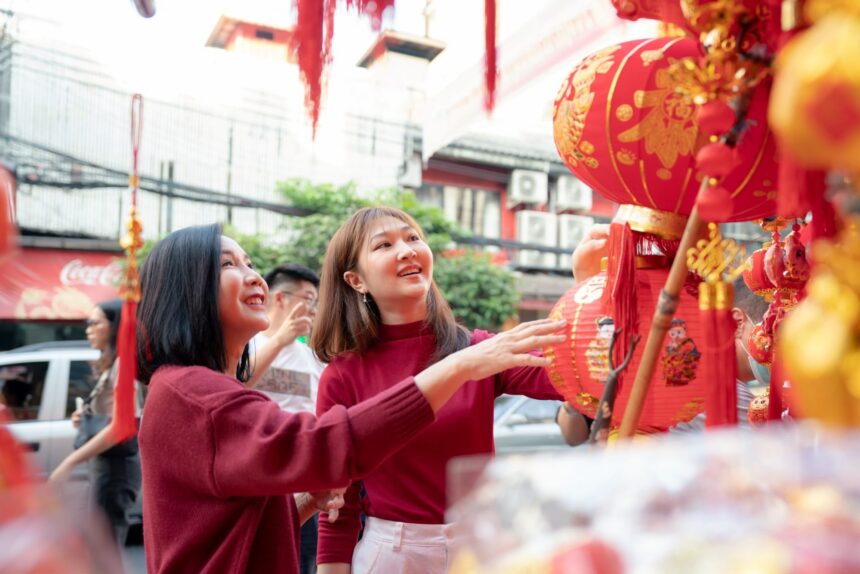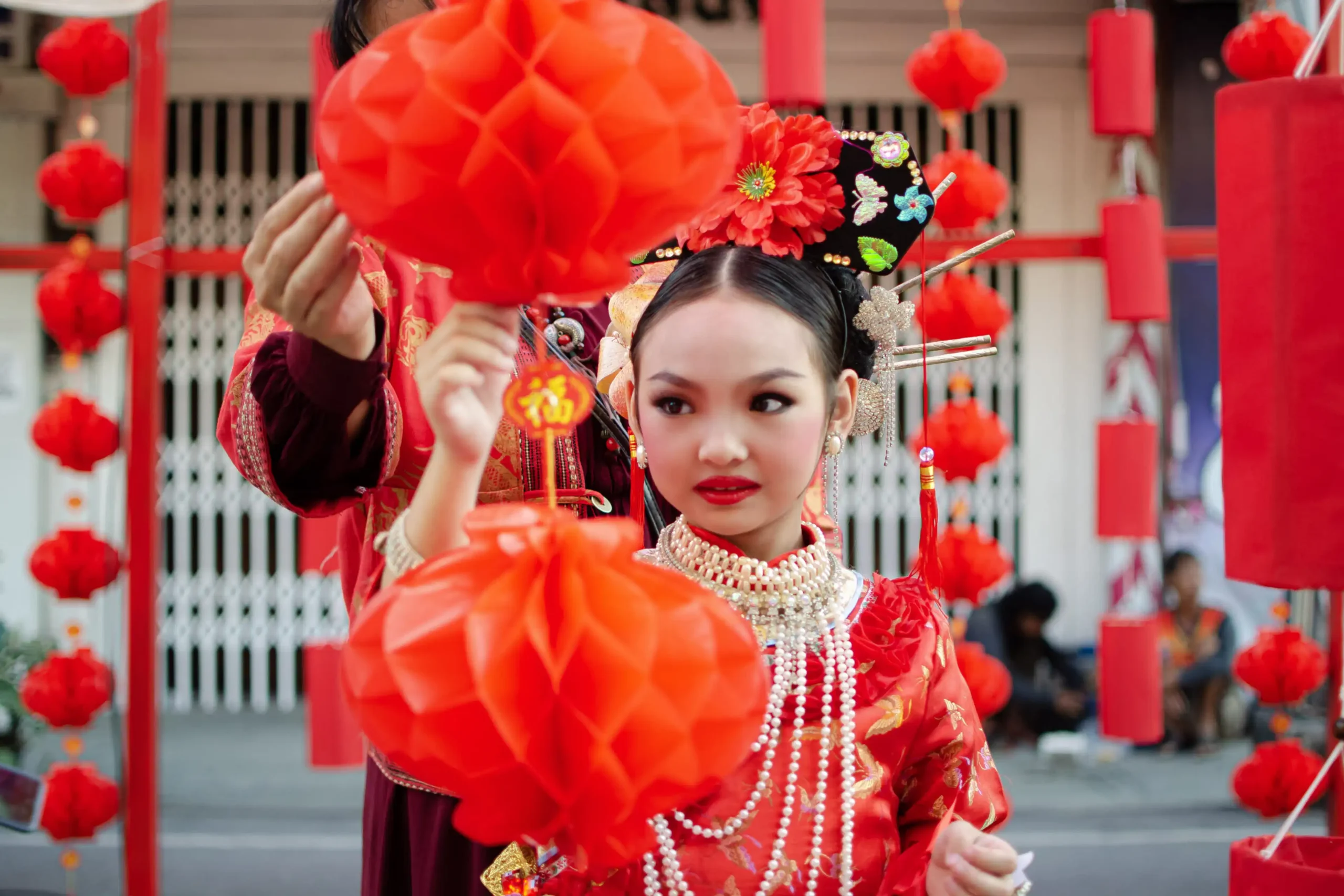Chiang Rai transforms into a hub of cultural energy during Chinese New Year 2025, blending ancient traditions with local charm. This vibrant celebration features dragon dances, lanterns, and lively markets, drawing locals and travellers.
With festivities centred in Central Chiang Rai and nearby attractions like Singha Park and Doi Mae Salong Chinese village, visitors experience a unique mix of heritage and scenery. Managed with support from the Tourism Authority of Thailand, the event promises colourful displays, authentic cuisine, and meaningful moments. Whether exploring temples or enjoying performances, Chiang Rai delivers a memorable New Year experience.
The Significance of Chinese New Year in Chiang Rai
Chinese New Year in Chiang Rai offers a unique perspective on this grand cultural event. Here, centuries-old Chinese traditions harmonize with the local Thai way of life, creating celebrations that are vibrant, inclusive, and deeply rooted in history.
Cultural and Historical Background
Due to its strong Chinese community, the Chinese New Year, or Spring Festival, holds historic ties to Chiang Rai. Many Chinese families settled in the region during the late 19th and early 20th centuries, leaving behind a rich tapestry of traditions that enriched the local culture. This celebration is not merely a holiday but a time to honour ancestors, gather with family, and welcome good fortune.
Chiang Rai’s festivities reflect a cultural fusion between Chinese and Thai influences. For example, traditional dragon parades and lion dances are often held in Central Chiang Rai, symbolizing strength and prosperity. These performances, filled with colour and rhythm, echo the communal spirit of the event. The Tourism Authority of Thailand often supports these events, ensuring their authenticity and accessibility for visitors.
More than just a spectacle, the local customs during Chinese New Year tell a wider story of harmony and cultural exchange. The event revitalizes Chiang Rai’s deep-rooted heritage, offering an authentic glimpse into its history. To learn more about Chinese New Year festivities in northern Thailand, you can explore this guide on festivals.
Why Chiang Rai Stands Out
What sets Chiang Rai apart from other New Year celebrations across Thailand? The city blends traditional Chinese customs with Thai hospitality and aesthetics. Signature highlights include gatherings at the Doi Mae Salong Chinese Village, a community known for its ties to Chinese culture. Situated amidst tea plantations, this spot allows visitors to savour traditional Chinese teas while engaging in holiday rituals—a picturesque yet meaningful experience.
Additionally, Singha Park Chiang Rai has become a centre of activity. Visitors can enjoy cultural performances, lantern displays, and unique New Year dishes. The park’s expansive natural scenery complements the festivities, offering a serene yet lively setting to enjoy the holiday.
Chiang Rai’s celebrations feel personal and picturesque, unlike more crowded festivities in bigger cities. Lantern-lit streets, smiling faces, and melodious gongs create an atmosphere that welcomes locals and tourists. Whether strolling through community markets or participating in Thai-Chinese traditions, visitors experience a cultural synergy.
Looking for insights into how Chiang Rai’s New Year festivities integrate broader cultural elements? Check out this fascinating article. It highlights how traditions from both regions coalesce for an unforgettable celebration.
Key Destinations for Chinese New Year 2025 Celebrations
Chinese New Year in Chiang Rai presents a beautiful fusion of culture, food, and festivities. From Central Chiang Rai’s lively streets to Singha Park’s scenic views and the traditions at Doi Mae Salong’s Chinese Village, these locations offer something special for every visitor.
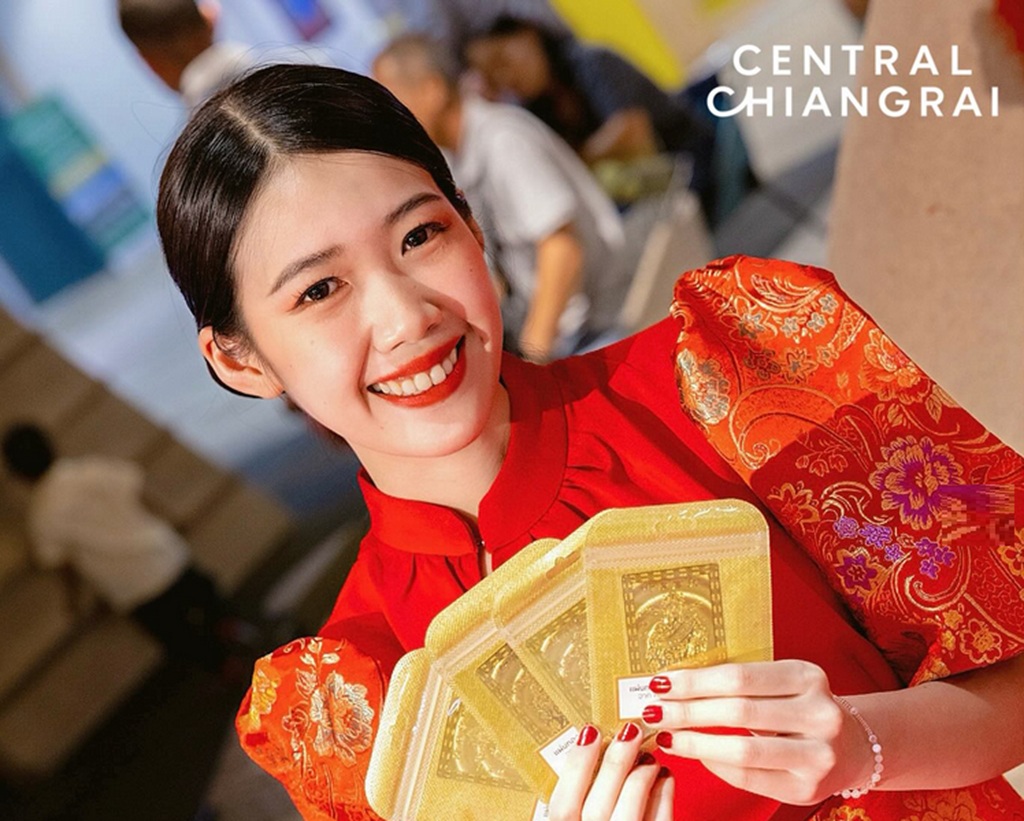
Central Chiang Rai’s Festivities
The heart of Chiang Rai beats louder during the Chinese New Year, with central festivities transforming the city into a vibrant cultural showcase. Dragon and lion dances take centre stage, their rhythmic movements accompanied by the crash of cymbals and the beat of drums. Streets are adorned with glowing lanterns featuring intricate designs that light up the town like an open-air festival of lights.
Cultural performances by local and national artists grace the event, blending storytelling and tradition to entertain crowds. Community gatherings around food stalls bring everyone closer. Visitors can savour traditional dishes like dumplings and spring rolls alongside local Thai favourites. Curious travellers can explore more about celebrations in Chiang Rai on Tripadvisor.
Central Chiang Rai offers an enriching experience for those who want an up-close encounter with authentic Chinese-Thai festivities.
Singha Park Chiang Rai Chinese New Year 2025 Activities
Singha Park becomes an unmissable hotspot during Chinese New Year. Known for its scenic beauty and family-friendly amenities, the park goes the extra mile to host special events for the occasion. Think giant lantern displays in every colour imaginable, creating a dreamy atmosphere after sunset.
Cultural showcases include traditional music performances and dance routines, offering a glimpse into ancient customs. Visitors can also enjoy bike rides around the park, tea plantation tours, or the culinary delights of the various food zones. Check out this guide, Singha Park Info, for more activities and insight about the park.
Singha Park is a captivating celebration destination whether you’re there for the sights, the shows, or just some quiet time amidst natural beauty.
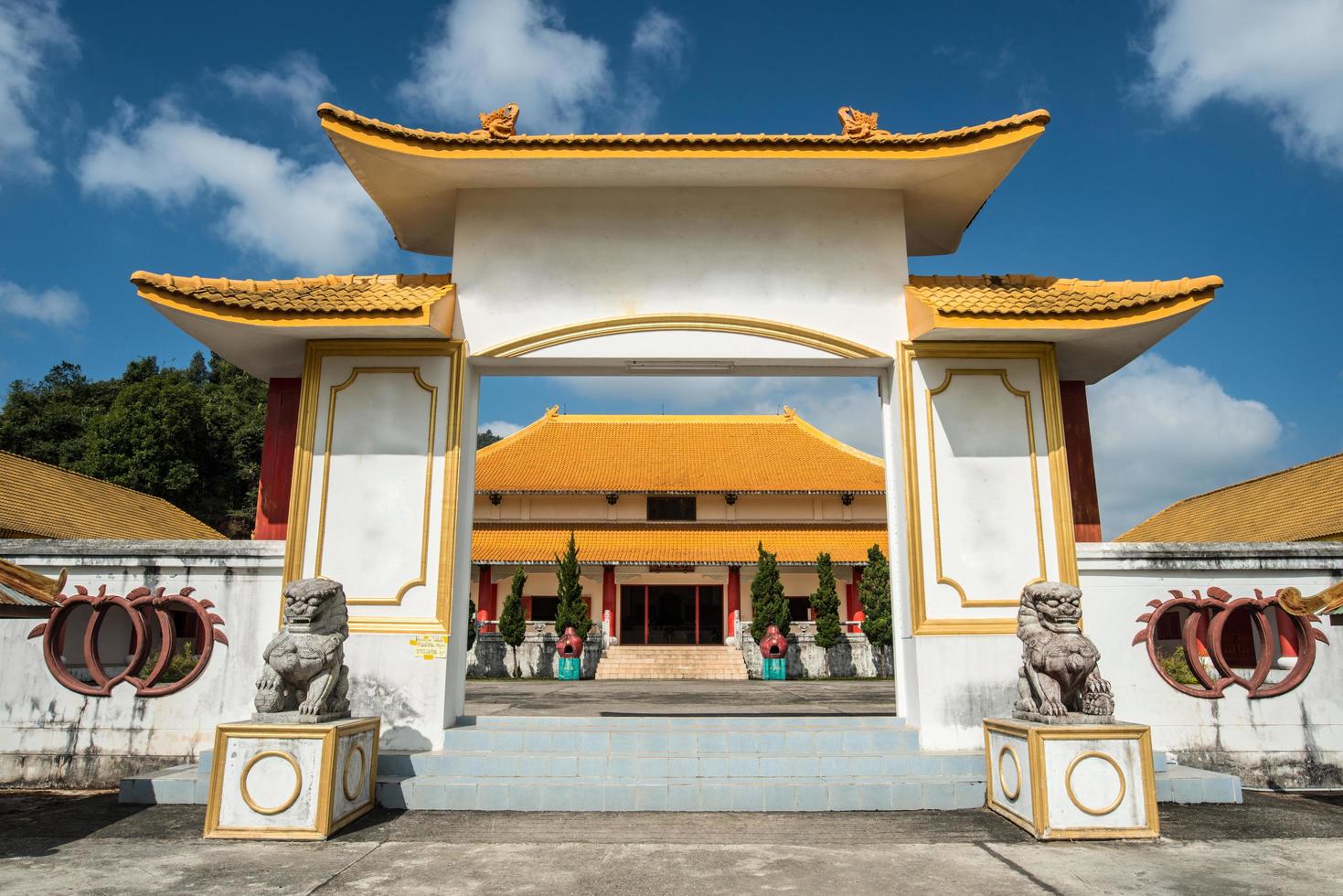
Doi Mae Salong Chinese Village Celebrations
Nestled in the mountains, Doi Mae Salong offers a more tranquil yet deeply traditional way to celebrate Chinese New Year 2025. Known for its strong Chinese heritage, this village showcases authentic customs passed down through generations. Visitors can stroll through lively markets from daybreak, offering exotic teas, traditional clothing, and handmade souvenirs.
Cultural exhibitions here are more than just performances; they pay tribute to history and heritage. Don’t miss the chance to savour authentic dishes like Chinese hotpots or handmade noodles. And while you’re enjoying the festivities, take a moment to soak in the stunning mountain views and surrounding tea plantations. Learn more about this unique location on Tourism Thailand.
Doi Mae Salong is perfect for those craving an intimate and historically rich celebration.

Traditional Activities and Experiences
Chiang Rai’s Chinese New Year festivities come alive with many traditional activities that captivate locals and tourists alike. From vibrant cultural performances to reflective temple visits and bustling marketplaces, the city offers a rich tapestry of experiences. Each activity adds its essence to the celebration, ensuring a memorable event steeped in history and community.
Dragon and Lion Dances
The rhythmic beats of drums and the crash of cymbals signal the arrival of the Dragon and Lion Dances, a central spectacle for Chinese New Year in Chiang Rai. These performances, deeply rooted in Chinese culture, symbolize strength, prosperity, and the warding off bad spirits. Energetic troupes dressed in elaborate dragon and lion costumes move with mesmerizing precision, drawing enthusiastic crowds.
Performances often occur in Central Chiang Rai’s heart, where streets transform into lively stages. The dancers’ synchronized movement their acrobatics create an electric atmosphere that’s hard to resist. This celebration highlights the importance of heritage while bringing communities together for shared joy and cheer.
Whether you’re a first-time observer or a returning enthusiast, the vibrant energy of these dances is unforgettable.
Temple Offerings and Prayers
For many, Chinese New Year is as much about spiritual renewal as it is about celebration. A cornerstone of the holiday in Chiang Rai includes temple visits for offerings and prayers. Families gather at iconic temples, lighting incense and presenting food or flowers as spiritual offerings. These rituals symbolize gratitude for past blessings and prayer for a prosperous year.
One of the most significant practices is the First Incense Offering, which occurs on New Year’s Day. This custom is believed to bring good fortune and ensures that participants start the year on a lucky note. Local temples become bustling hubs of devotion this season, offering visitors a chance to witness or partake in these traditions firsthand. For more information, explore this guide to Lunar New Year temple offerings.
Temple vinyl provides a tranquil escape from the celebratiandffer an intimate window into Chiang Rai’s cultural ethos.
Festive Street Markets
Another highlight of Chinese New Year in Chiang Rai is the festive street markets, bustling with life and colour. These markets are a treasure trove of local foods, decorations, and souvenirs reflecting the season’s spirit. As you stroll through the stalls, the scent of freshly made dumplings, sweet candies, and traditional steamed buns fills the air.
Market highlights often include:
- Handmade decorations: Delight in intricate red lanterns, paper cuttings, and other New Year symbols meant to attract luck.
- Local delicacies: Feast on tangy spring rolls, crispy pork, and unique desserts that combine Thai and Chinese flavours.
- Souvenirs: From traditional clothing to handcrafted trinkets, these markets offer ample opportunities for gift shopping.
In particular, the Chiang Rai Night Bazaar has become a focal point for holiday shoppers and foodies, perfectly blending festivity with cultural charm. This comprehensive guide explains the top market experiences in Chiang Rai.
Immersing yourself in these marketplaces is the ideal way to take home souvenirs and lasting memories of Chiang Rai’s vibrant cultural traditions.
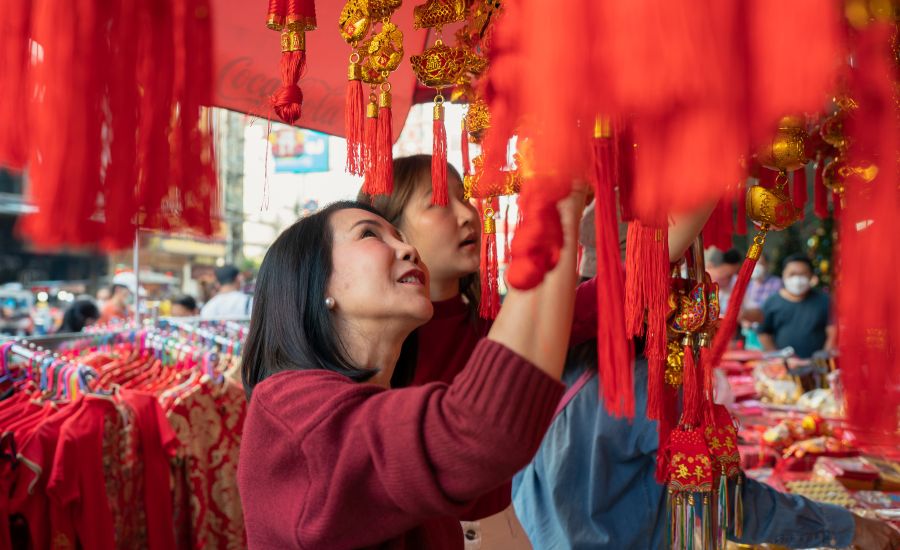
Travel Tips for Visitors
Preparation is key if you’re planning to celebrate Chinese New Year in Chiang Rai. From timing your visit to picking the best accommodations, every detail can enhance your experience. Here are essential travel tips to make your visit memorable.
Best Times to Visit: List the Peak Days for Festivities and Quieter Times for Exploration
The Chinese New Year festivities in Chiang Rai often centre around the first few days of the lunar calendar. These days are packed with energy, dragon performances, and crowded street markets. For those who thrive in lively environments, arriving a day or two before the official start is smart. This ensures you won’t miss key events like the dragon dances in Central Chiang Rai and lantern-lighting ceremonies at Singha Park.
If you hope to explore the city without the crowds, consider visiting the days after the main celebrations. By mid-week, activities shift towards family gatherings, and the atmosphere becomes more subdued. This is the perfect time to visit landmarks like Doi Mae Salong’s Chinese Village or take a tranquil walk through Singha for additional insights into the region’s peak and quieter periods.
Navigating the City During Festivals: Tips on Transportation and Avoiding Road Closures
Chiang Rai sees increased traffic during Chinese New Year, especially near celebration hubs like Central Chiang Rai and Singha Park. Road closures for parades can make getting around a challenge. Plan your routes and stay informed about event schedules if you rent a vehicle. For updates on transportation during festival periods, check resources like the Chiang Rai Travel Guide.
Public transportation, such as tuk-tuks and songthaews (shared pickup trucks), remains your best bet for navigating the city efficiently. These are widely available and provide a wallet-friendly option to bypass traffic hotspots. Ride-hailing apps are also an excellent alternative, offering clear pricing and route options. Want a more adventurous way to explore? Renting mopeds is a popular choice for visitors. However, if you’re unfamiliar with local traffic rules, proceed cautiously for a detailed look at transportation options in Chiang Rai.
Where to Stay: Accommodations Offering the Best Access to Key Celebration Areas
Where you stay can make all the difference during busy festival periods. Opt for accommodations close to central celebration points to minimize travel time. The Le Méridien Chiang Rai Resort is a standout option, providing luxurious rooms and convenient access to the heart of the festivities.
Laluna Hotel and Resort and The Legend Chiang Rai Boutique River Resort are excellent choices for those on a more moderate budget. These venues combine comfort with proximity to key locations. If you’re venturing further to destinations like Singha Park or Doi Mae Salong, consider picking accommodations nearer to these quieter attractions.
Booking early is crucial, as hotels fill up quickly during Chinese New Year. To maximize your mobility, look for options that provide easy access to public transportation or taxi services. With the right planning, your visit to Chiang Rai during Chinese New Year will balance cultural immersion and travel convenience.
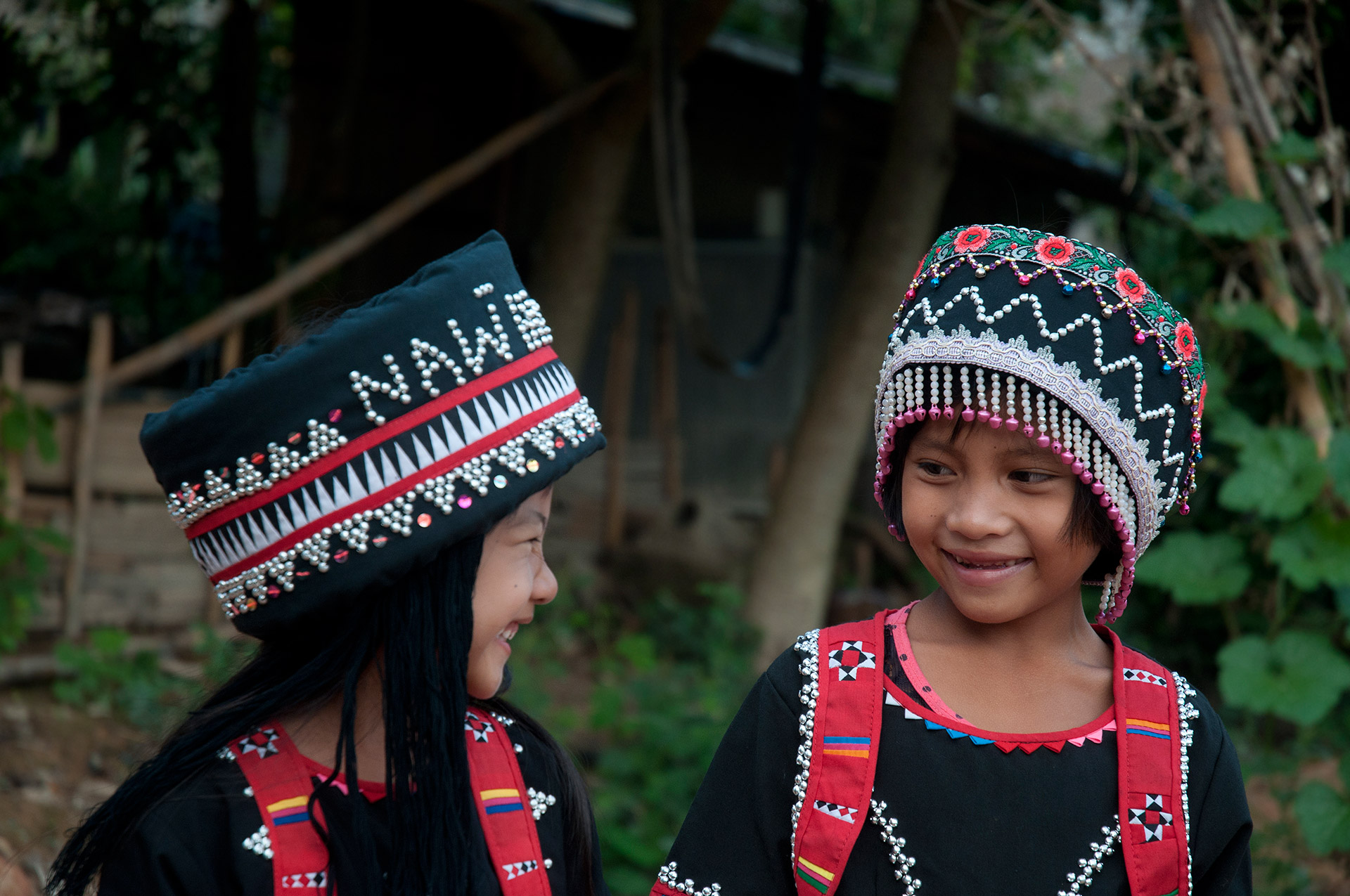
Impact on Tourism and Local Community
Chinese New Year in Chiang Rai profoundly influences tourism and the local community. This annual celebration attracts many travellers and strengthens cultural heritage and economic opportunities.
Tourism Boost and Events
The Chinese New Year transforms Chiang Rai into Thailand’s key travel destination. With vibrant dragon dances, glowing lanterns, and immersive cultural events, the festivities draw visitors from across the globe. Notably, the Tourism Authority of Thailand (TAT) actively supports these events, helping to enhance their accessibility and reach. During the 2025 celebrations, Chiang Rai is expected to be one of the destinations benefiting from over 4 million international travellers, as noted in a recent tourism forecast.
Special events, such as traditional performances and lantern ceremonies at Singha Park Chiang Rai, play a significant role in this tourism upswing. Combining breathtaking natural scenery and tailored cultural experiences makes these activities unmissable for visitors. Community hubs like the Doi Mae Salong Chinese Village also host unique celebrations that spotlight traditional Chinese customs amidst picturesque mountain settings.
Economic and Cultural Impact
The influx of tourists during Chinese New Year significantly boosts the local economy. Travellers flock to Chiang Rai’s street markets and shops, fueling demand for handmade goods, local delicacies, and cultural artefacts. This period generates substantial revenue for small businesses, particularly in markets like the Chiang Rai Night Bazaar, where food vendors and artisans experience record sales.
Culturally, these festivities reinforce Chiang Rai’s Thai-Chinese heritage. Dragon dances, lion parades, and temple visitations are more than ceremonial acts—they’re living traditions that keep the past alive. With support from organizations like the Tourism Authority of Thailand, these events have grown to highlight the city’s unique historical narrative. Visitors gain an authentic glimpse into Chiang Rai’s culture, fostering an appreciation beyond surface-level tourism.
The local economy isn’t the only beneficiary—the celebration uplifts the community emotionally. Markets bustling with activity, streets glowing with festive lights, and public spaces alive with performances infuse the area with a renewed energy, leaving a lasting impact on residents and visitors alike. Find further insights about Chiang Rai’s tourism opportunities.
Celebrating Chinese New Year in Chiang Rai is a unique opportunity to experience a cultural intersection between Chinese and Thai traditions. The city’s colourful parades, serene temple rituals, and warm community atmosphere create unforgettable moments for visitors.
From the dragon dances in Central Chiang Rai to Doi Mae Salong’s tranquil charm and Singha Park’s vibrancy, each experience offers something special. It’s a time to appreciate heritage while enjoying the stunning landscapes and local hospitality.
Consider planning your visit early to make the most of this festive season. Whether you’re an observer or an active participant, Chiang Rai’s Chinese New Year celebrations promise memories that last a lifetime.

Geoff Thomas is an award winning journalist known for his sharp insights and no-nonsense reporting style. Over the years he has worked for Reuters and the Canadian Press covering everything from political scandals to human interest stories. He brings a clear and direct approach to his work.




